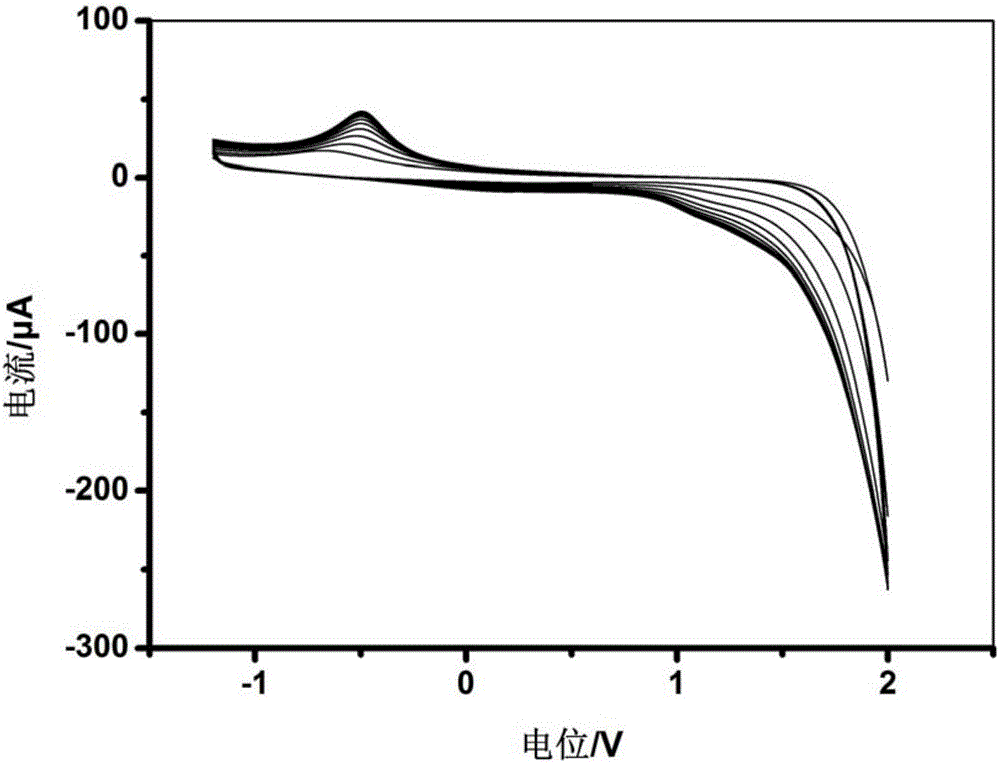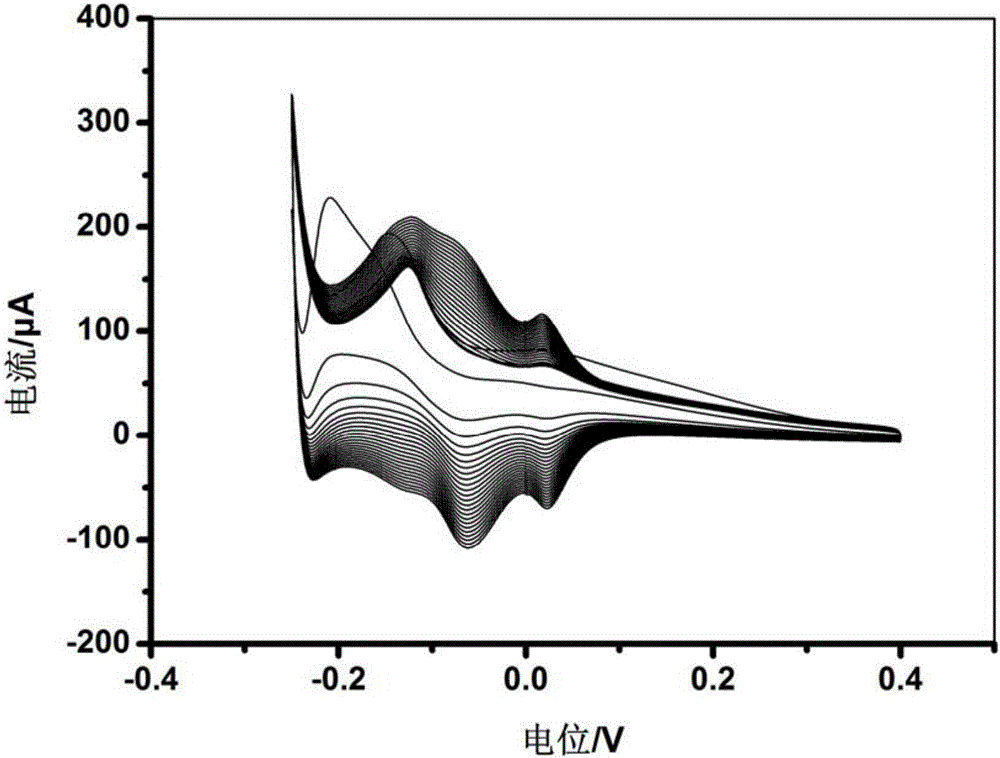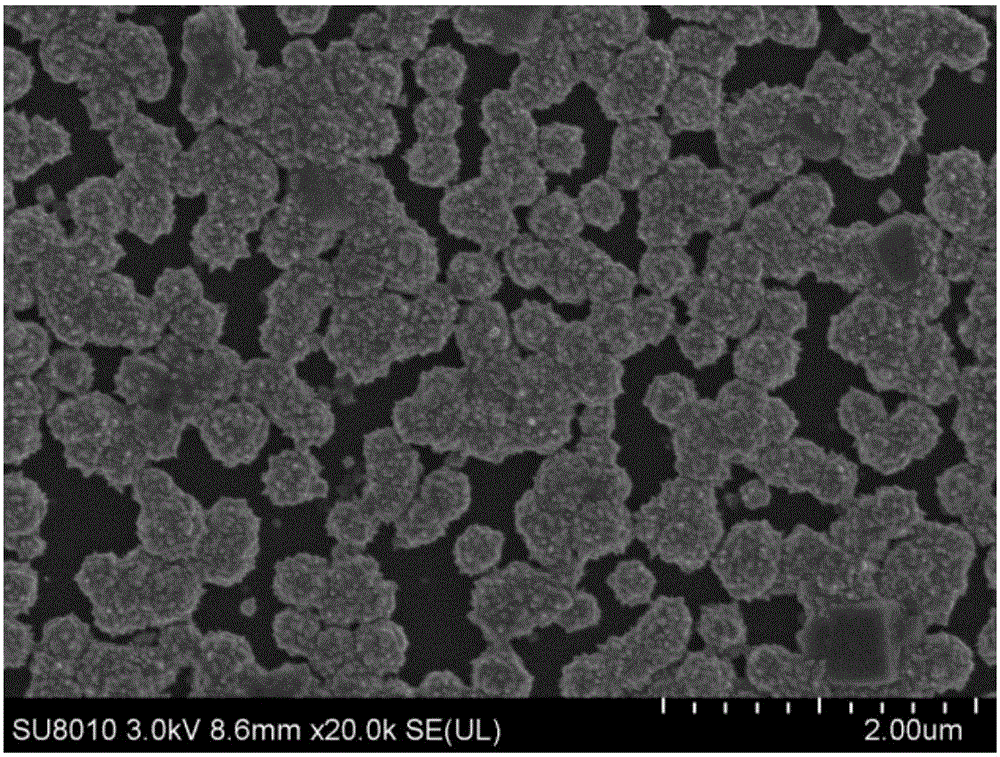Composite material modified electrode used for measuring glucose concentration and application thereof
A technology of modifying electrodes and composite materials, which is applied in the field of composite materials modifying electrodes, can solve the problems of insufficient electrode stability, large temperature influence, and narrow measurement range, and achieve stable measurement, good catalytic activity, and improved electrode stability.
- Summary
- Abstract
- Description
- Claims
- Application Information
AI Technical Summary
Problems solved by technology
Method used
Image
Examples
Embodiment 1
[0024] Preparation of polyaspartic acid / platinum nanocomposite modified electrode (PASP / Pt / GCE) for glucose determination, comprising the following steps:
[0025] (1) Glassy carbon electrode pretreatment: Use 300nm and 50nm α-Al on the suede in sequence 2 o 3 Polish the glassy carbon electrode to the mirror surface with the paste polishing solution, then use absolute ethanol and deionized water to ultrasonically wash the electrode for 1min, and then place the cleaned glassy carbon electrode in 0.5mol / L dilute sulfuric acid solution, in- The 0.5-1.2V potential range was activated by cyclic voltammetry at a scan rate of 100mV / s until the response was stable. Finally, the glassy carbon electrode was rinsed with deionized water and dried for later use.
[0026] (2) Before modifying the glassy carbon electrode, the electrode needs to be at 1mmol / L K 3 [Fe(CN) 6 ] solution (containing 0.1mol / L KCl) to conduct cyclic voltammetry scanning to verify the reversibility of the electro...
Embodiment 2
[0036] Preparation of polyaspartic acid / platinum nanocomposite modified electrode (PASP / Pt / GCE) for glucose determination, comprising the following steps:
[0037] (1) Glassy carbon electrode pretreatment: Use 300nm and 50nm α-Al on the suede in sequence 2 o 3 Polish the glassy carbon electrode to the mirror surface with paste polishing liquid, then apply absolute ethanol and deionized water to ultrasonically wash the electrode for 90s, and then place the cleaned glassy carbon electrode in 0.4mol / L dilute sulfuric acid solution, in- In the 0.6-1.4V potential range, cyclic voltammetry activation was performed at a scan rate of 120mV / s until the response was stable. Finally, the glassy carbon electrode was rinsed with deionized water and dried for later use.
[0038] (2) The pretreated glassy carbon electrode was placed in a solution of 1.5mmol / L aspartic acid (a phosphate buffer solution with a concentration of 0.15mol / L and a pH value of 6.5), and electrodeposition was perfor...
Embodiment 3
[0042] Preparation of polyaspartic acid / platinum nanocomposite modified electrode (PASP / Pt / GCE) for glucose determination, including the following steps
[0043] (1) Glassy carbon electrode pretreatment: Use 300nm and 50nm α-Al on the suede in sequence 2 o 3 Polish the glassy carbon electrode to the mirror surface with the paste polishing solution, then use absolute ethanol and deionized water to ultrasonically wash the electrode for 2 minutes, and then place the cleaned glassy carbon electrode in 0.6mol / L dilute sulfuric acid solution, in- The 0.8-1.5V potential range was activated by cyclic voltammetry at a scan rate of 140mV / s until the response was stable. Finally, the glassy carbon electrode was rinsed with deionized water and dried for later use.
[0044] (2) The pretreated glassy carbon electrode was placed in a solution of 3 mmol / L aspartic acid (a phosphate buffer solution with a concentration of 0.2 mol / L and a pH value of 7), and electrodeposition was performed by ...
PUM
 Login to View More
Login to View More Abstract
Description
Claims
Application Information
 Login to View More
Login to View More - R&D
- Intellectual Property
- Life Sciences
- Materials
- Tech Scout
- Unparalleled Data Quality
- Higher Quality Content
- 60% Fewer Hallucinations
Browse by: Latest US Patents, China's latest patents, Technical Efficacy Thesaurus, Application Domain, Technology Topic, Popular Technical Reports.
© 2025 PatSnap. All rights reserved.Legal|Privacy policy|Modern Slavery Act Transparency Statement|Sitemap|About US| Contact US: help@patsnap.com



